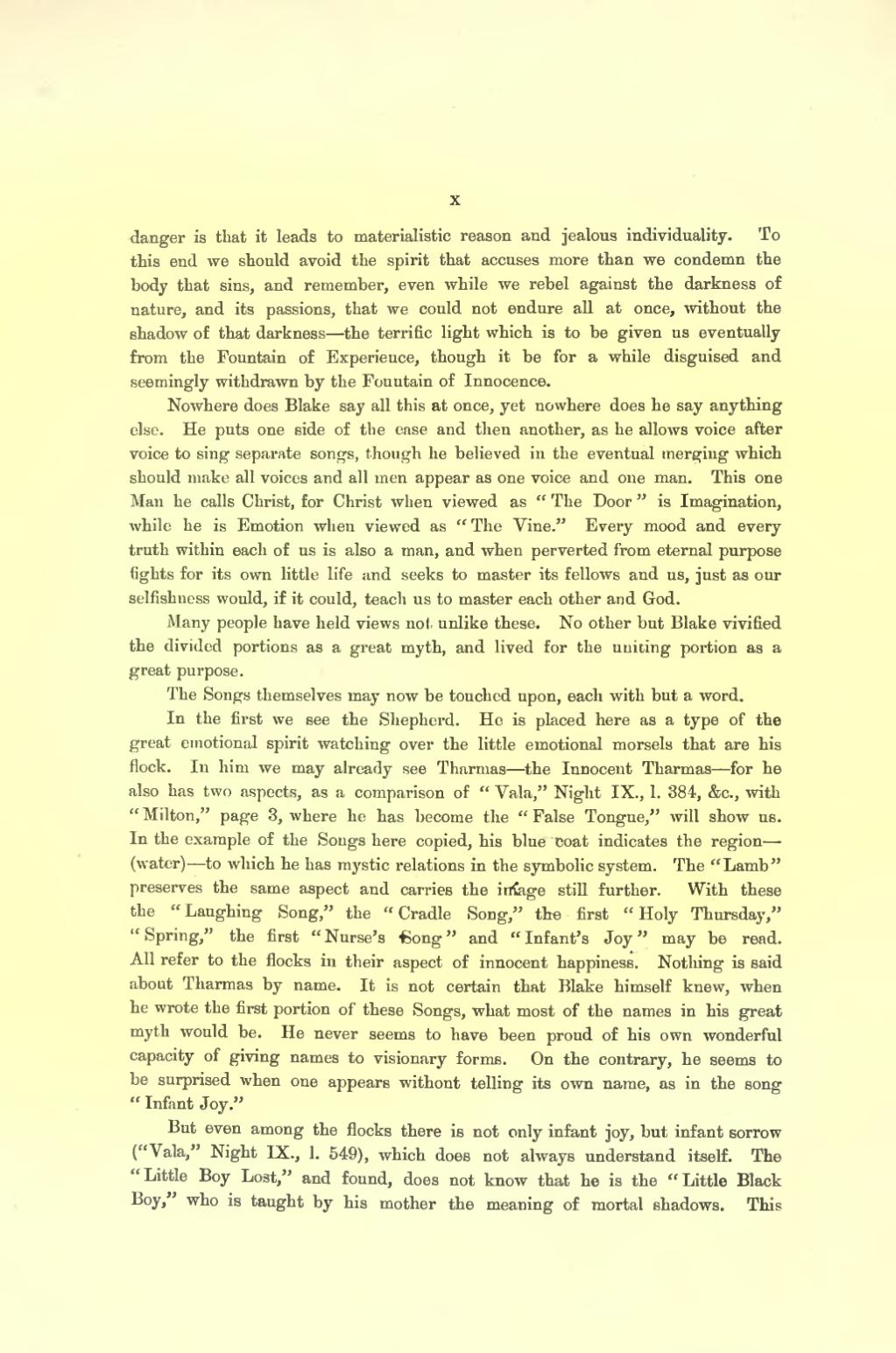x
danger is that it leads to materialistic reason and jealous individuality. To this end we should avoid the spirit that accuses more than we condemn the body that sins, and remember, even while we rebel against the darkness of nature, and its passions, that we could not endure all at once, without the shadow of that darkness—the terrific light which is to be given us eventually from the Fountain of Experience, though it be for a while disguised and seemingly withdrawn by the Fountain of Innocence.
Nowhere does Blake say all this at once, yet nowhere does he say anything else. He puts one side of the case and then another, as he allows voice after voice to sing separate songs, though he believed in the eventual merging which should make all voices and all men appear as one voice and one man. This one Man he calls Christ, for Christ when viewed as "The Door" is Imagination, while he is Emotion when viewed as "The Vine." Every mood and every truth within each of us is also a man, and when perverted from eternal purpose fights for its own little life and seeks to master its fellows and us, just as our selfishness would, if it could, teach us to master each other and God.
Many people have held views not unlike these. No other but Blake vivified the divided portions as a great myth, and lived for the uniting portion as a great purpose.
The Songs themselves may now be touched upon, each with but a word.
In the first we see the Shepherd. He is placed here as a type of the great emotional spirit watching over the little emotional morsels that are his flock. In him we may already see Tharmas—the Innocent Tharmas—for he also has two aspects, as a comparison of "Vala," Night IX., 1. 384, &c., with "Milton," page 3, where he has become the "False Tongue," will show us. In the example of the Songs here copied, his blue coat indicates the region—(water)—to which he has mystic relations in the symbolic system. The "Lamb" preserves the same aspect and carries the image still further. With these the "Laughing Song," the "Cradle Song," the first "Holy Thursday," "Spring," the first "Nurse's Song" and "Infant's Joy" may be read. All refer to the flocks in their aspect of innocent happiness. Nothing is said about Tharmas by name. It is not certain that Blake himself knew, when he wrote the first portion of these Songs, what most of the names in his great myth would be. He never seems to have been proud of his own wonderful capacity of giving names to visionary forms. On the contrary, he seems to be surprised when one appears without telling its own name, as in the song "Infant Joy."
But even among the flocks there is not only infant joy, but infant sorrow ("Vala," Night IX., 1. 549), which does not always understand itself. The "Little Boy Lost," and found, does not know that he is the "Little Black Boy," who is taught by his mother the meaning of mortal shadows. This
